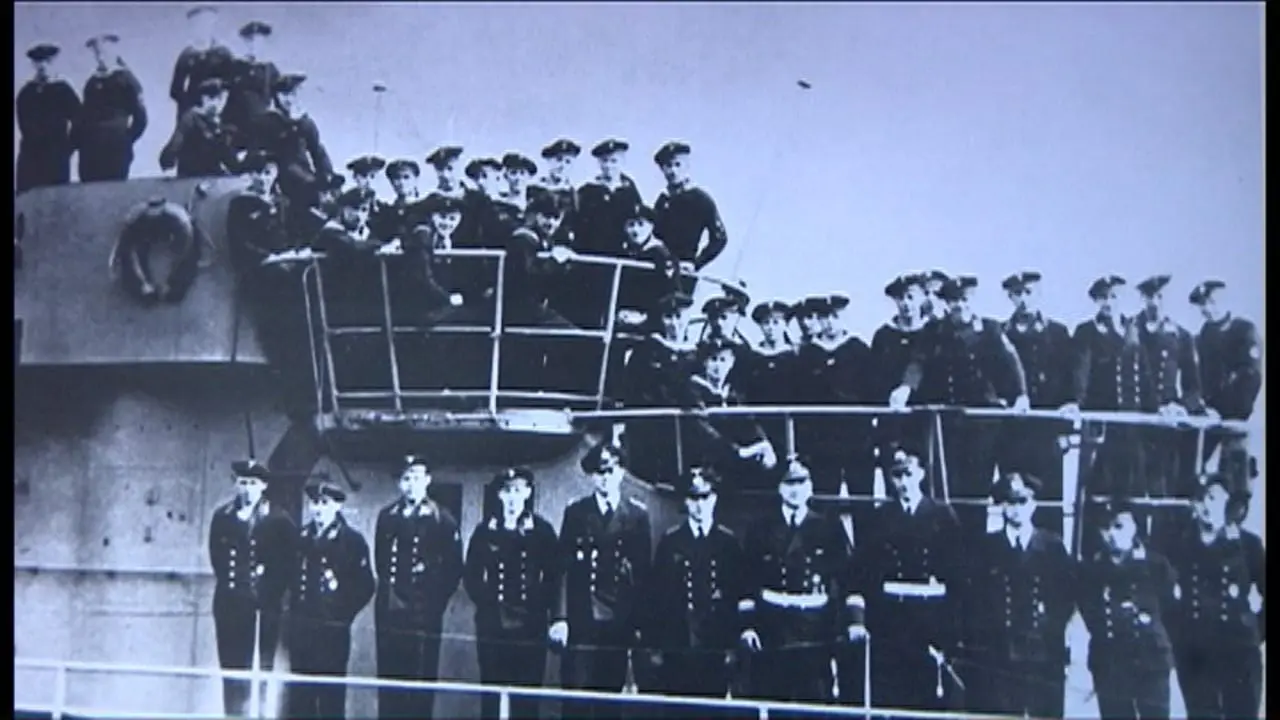Every year on December 7 the nation honors and remembers the 2,403 citizens of the United States who were killed along with the 1,178 who were wounded in the surprise Japanese attack on Pearl Harbor. Flags are flown at half-mast and ceremonies are held across the country.
Only a few people remember that 75 years ago on May 5, 1945, the last battle of World War 2 was fought just a few miles off the coast of Rhode Island. The Battle of Point Judith was between the U-853, a German U-boat, and US Naval forces including 3 destroyers. The sounds of the battle and smoke from the explosions could be heard and seen from the beaches of Westerly.
In 1942 German U-boats came to the east coast of America, we were totally unprepared. They roamed up and down our coasts torpedoing ships at will. The U-boat crews referred to this part of the war as “the happy times.” Winston Churchill once wrote “The only thing that really frightened me was the U-boat peril.”
In the first 8 months of 1942 German U-boats sank nearly 400 Allied ships along the US Atlantic coast with the loss of over 5000 merchant seamen and sailors, twice the number of fatalities suffered at Pearl Harbor.
By 1943 the tide of battle had changed, the U-boats became the hunted instead of the hunter. Toward the end of the war, a U-boat patrol was almost considered a suicide mission. Of the 40,000 sailors who served on U-boats over 28,000 were killed, the highest casualty rate of any service, in any war!
In the waning months of the war, six U-boats left the coast of Nazi-occupied Norway bound for the east coast of America, no one knew their mission. The U-853 was one of them.
The new commander of the U-853 was 24-year-old, Ober Lieutenant Helmut Fromsdorf. Because of allied hunter-killer groups, Fromsdorf probably ran submerged most of the time using his snorkel to avoid detection. On arriving off the coast of Maine the U-853 spotted the US Navy ship Eagle. She was a 200-foot long sub-chaser with a crew of 62.
This was the Eagle’s last job towing a target for dive bombers out to sea. She was sitting dead still in the water when a massive explosion occurred mid-ship, which blew the Eagle into two parts. 49 of her crew were killed. The U-853 escaped the area before warships could find her.
A Navy inquiry ruled that the explosion was caused by an accidental boiler explosion. This was in spite of some of the crew reporting that they had seen a submarine surface just after the attack. Incredibly there was no warning issued by the navy to merchant ships that a U-boat was prowling the coastline. The reason was that US intelligence suspected that the 6 U-boats that had left Norway might be preparing a dirty radioactive bomb sneak attack on New York, and didn’t want to cause a panic.
On May 4, 1945, U-boat headquarters broadcast to all U-boats — cease all action. Germany was scheduled to sign its surrender on May 6, but the U-853 never acknowledged. Fromsdorf either didn’t get the message OR chose to ignore it.
Around 5:00 pm May 5, one day before the war ended, the U-853 cruising at periscope depth two miles off Point Judith, Rhode Island torpedoed and sank the 5,000-ton steamship Black Point. The Black Point did not even have lookouts posted because they thought the war was over.
Captain Prior, master of the Black Point, describes what took place:
“I took out my cigarette, and was going ahead to light it, but whether I ever did or not I could not tell you. Maybe I swallowed the damn thing. Because that is when it hit the fan. And hell, everything… the clock came off the bulkhead, the barometer fell off, the windows shattered, the doors blew open in the pilot house. And immediately, you could smell cordite because it blew the whole stern off.”
Twelve men went down with the Black Point and 34 were rescued. They were taken to Point Judith Lifesaving Station where they were issued new clothing, fed and then sent to Boston. At 7:30 pm US warships reached the area they thought the U-853 would be in. At 8:14 pm the lead destroyer USS Atherton picked up a sonar contact and determined that the sonar contact was moving slowly away. At 8:29 pm the destroyer dropped 13 depth charges set on magnetic. The center one exploded, indicating it had struck metal.
Atherton then made a second attack using hedgehogs. After the second attack, contact was lost and then reestablished at 11:33 pm. The U-853 had moved about 4,000 yards from the original attack area. Fromsdorf was probably trying to sneak away to deeper water. At 11:37 Atherton made another hedgehog attack. This time oil and debris erupted from the sea. There was little that could be done aboard U-853. She was in shallow water and had nowhere to hide. All three destroyers now joined in the attack. There were even two dirigibles from Lakehurst, New Jersey attacking the crippled U-853. At 10:45 am the attacks stopped when the captain’s hat floated to the surface.
After the sinking of the U-853, the US Navy dispatched the salvage ship Pelican because she was equipped with diving equipment. Navy divers were sent down to try and locate the U-853’s logbook which might explain why the U-853 attacked the Black Point. One body was recovered from the wreck but because of the danger from the unexploded ordinance surrounding the U-853, further recovery efforts were called off.
The former captain of the U-853, Helmut Sommer, said to Fromsdorf prior to him leaving Norway on that last patrol, “The wars almost over. They’re all good boys. Make sure you bring them home.” The 55 men of the U-853’s crew still sit to this day 7 miles to the east of Block Island in 130 feet water waiting to go home.
Over the last 25 years, the wreck of the U-853 has become a popular dive site but only for experienced divers. At least 2 deaths have occurred in recent years diving on the wreck. Bones of the crew are still visible in the interior. The wreck is considered a war grave and these remains should not be disturbed. There are a number of dive charters that can take you out to the U-853 and the scene of the last battle of World War 2. The mystery of why Fromsdorf sacrificed his crew and ship for what he must have known was a lost cause, has never been discovered.








